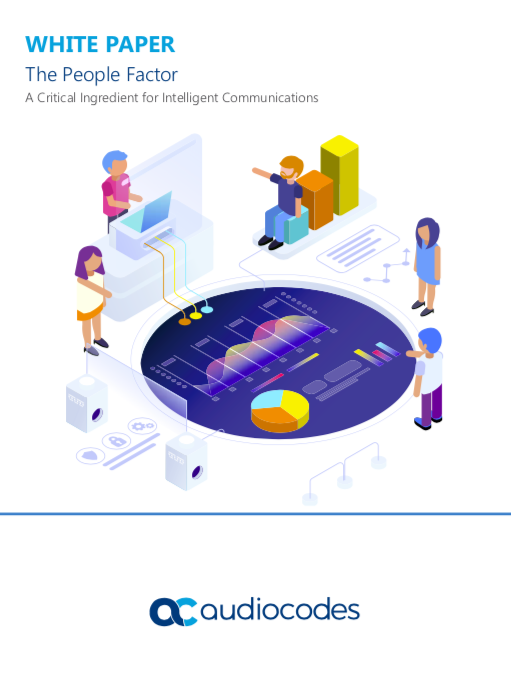Neo digital transformation
In a post-COVID business landscape, do enterprises need to rethink how they acquire and implement technologies?


While most businesses had a digital transformation roadmap in place prior to the arrival of COVID-19, the massive changes wrought by the pandemic has forced organisations of all types to reevaluate their plans. These new strategies reflect how technology, workforces and their customers alike behave in a post-COVID-19 environment.
According to a report from BT and Cisco, 82% of respondents believe that digitally equipped organisations were significantly less vulnerable to the pandemic's impacts. This has had a clear strategic impact, with 96% saying their customers are now taking a more strategic digital investment approach and 91% saying businesses are prioritising digital transformation plans for the foreseeable future. This highlights key opportunities for businesses in increased agility and flexibility; enhance customer experience, and drive efficiencies.
Technologies that enabled remote working on a mass scale have exploded over the last year. Businesses are now looking forward to assessing how what Gartner calls ‘acute disruption’ will become more permanent as enterprises rebuild themselves in the wake of the pandemic.
Speaking to IT Pro, Paul Kostek, IEEE senior member and advisory systems engineer to Base2 Solutions, says a more integrated use of technology is the key to business success post-pandemic. “The major impact of the pandemic will be how we work, but most importantly, where we work. Technology today, such as broadband, improved capability of smartphones, tablets and laptops, has made remote working easier than expected. Moving forward, we will likely see more global projects as connectivity improves.”
The COVID catalyst
The new normal that has evolved over the past year has a clear technological component. Indeed, in a June 2020 report PwC identified leveraging new technologies and migrating to digital platforms that enable remote collaboration, operational efficiency and resilience as foundational to the post-pandemic way of working. The report also concluded that businesses should ensure their customer engagement models account for the massive shift to online retailing that has taken place.
Many businesses pre-COVID-19 had been sluggishly implementing their digital transformation plans. The pandemic revealed their lack of agility and how legacy systems were stalling their ability to innovate and meet customer demands.
A change in mindset has been forced onto these companies who can see their more dynamic competitors innovating to meet their needs as the pandemic widened. In an October 2020 report, McKinsey found that businesses which quickly experimented with new technologies during the crisis, hiring the right technical talent and focusing on cybersecurity, will have a technical advantage post-COVID-19.
Get the ITPro daily newsletter
Sign up today and you will receive a free copy of our Future Focus 2025 report - the leading guidance on AI, cybersecurity and other IT challenges as per 700+ senior executives
Nick Smith, a partner in technology strategy and transformation at management consultancy Deloitte, tells IT Pro that success during and after the pandemic isn’t just about new technologies and an increased headcount. Many businesses, he says, are using the technologies they have in more creative ways. "I’d argue that we are seeing new classes of technology, but more that we are seeing existing technologies more easily implemented and developed – particularly within data, artificial intelligence, machine learning, cloud and cyber. Used effectively, these technologies provide organisations with the credentials to act with agility and scale, while bolstering their resilience.”
RELATED RESOURCE

The people factor: A critical ingredient for intelligent communications
How to engage employees in digital transformation
All of the technologies that will form the new digital transformation roadmaps businesses will follow post-COVID-19 will have a data foundation. How companies collect and analyse this information will be fundamental to their success, says Sue Daley, techUK's associate director for technology and innovation. “Data is vital to driving economic growth, productivity, job creation and innovation in the goods, products and services offered by businesses both online and offline.” Daley explains. “Bringing data together with key tools such as data analytics and cutting-edge AI solutions will enable businesses to understand the power of business data and make real time business decisions about their post COVID-19 future plans based on data.”
A digital advantage
Choosing the right technologies to deploy as businesses move out of the pandemic will be critical for CIOs and CTOs. From a business technology perspective, the pandemic has been about quickly adapting to the rapidly changing environment where lockdown presented process and workforce challenges.
The CIO and IT Leadership Survey 2021 from Coeus Consulting gives insights into how tech leadership has also changed, thanks to Coronavirus. Almost 80% of respondents implemented ‘quick fix’ solutions and 82% stated that business and IT leadership played a crucial role in improving ways of working across the company.
Commenting on the findings at the time, Ben Barry, director of Coeus Consulting said: “IT leaders and their teams have had a great opportunity to show their value and will continue to drive the strategic agenda in 2021 and beyond. This increased visibility and the business’ dependence on IT has given them an opportunity to demonstrate that IT leads in terms of business transformation and should be funded accordingly.”
Innovating at speed to meet customer and commercial partner expectations have meant in many cases a business-wide pivot to uncharted technical territories. The retail space, for instance, is now almost unrecognisable from a year ago.
According to IBM's COVID-19 and the future of business report, 55% of respondents said the pandemic has resulted in permanent changes to their organisational strategy, while 60% said they had adjusted their approach to change management.
Change – and change at speed – now define the new digital transformation strategies all businesses are following. As Laurence Buchanan, Partner and CEO at EY Seren explains: “The past 11 months have shown that we can introduce new technologies at a much faster pace than previously thought possible. However, there are certainly lessons to be learned: Those who have successfully introduced new digital technologies have typically had a strong foundation of agile ways of working, extreme customer centricity and an ability to test and learn. Others have had to build this new muscle memory fast!”
COVID-19 has changed business and customer relationships forever, and commercial partners in the B2B space are also rapidly changing their supply chains. Digital transformation roadmaps that were in place prior to March 2020 will inevitably be outdated in a post-pandemic world.
EdTech, FinTech, digital health, collaboration tools, enhanced cybersecurity platforms and more automation, will all be key components of the new technology landscape. Businesses must adapt to these changes, maintain an agile mindset as their markets, customers and partners emerge from their COVID cocoons.
David Howell is a freelance writer, journalist, broadcaster and content creator helping enterprises communicate.
Focussing on business and technology, he has a particular interest in how enterprises are using technology to connect with their customers using AI, VR and mobile innovation.
His work over the past 30 years has appeared in the national press and a diverse range of business and technology publications. You can follow David on LinkedIn.
-
 The Race Is On for Higher Ed to Adapt: Equity in Hyflex Learning
The Race Is On for Higher Ed to Adapt: Equity in Hyflex LearningBy ITPro
-
 Google faces 'first of its kind' class action for search ads overcharging in UK
Google faces 'first of its kind' class action for search ads overcharging in UKNews Google faces a "first of its kind" £5 billion lawsuit in the UK over accusations it has a monopoly in digital advertising that allows it to overcharge customers.
By Nicole Kobie
-
 Optimise CX and accelerate business growth through your voice network
Optimise CX and accelerate business growth through your voice networkwhitepaper Protecting the human experience in a digital world
By ITPro
-
 Enterprises are doubling down on IT optimization strategies – and it’s delivering huge financial returns
Enterprises are doubling down on IT optimization strategies – and it’s delivering huge financial returnsNews Organizations that have cracked IT cost optimization and innovation reap the rewards both financially and in terms of time to market.
By Emma Woollacott
-
 IDC InfoBrief: Sustainability doesn’t need to be all stick and no carrot
IDC InfoBrief: Sustainability doesn’t need to be all stick and no carrotwhitepaper CIOs are facing two conflicting strategic imperatives
By ITPro
-
 How to empower employees to accelerate emissions reduction
How to empower employees to accelerate emissions reductionin depth With ICT accounting for as much as 3% of global carbon emissions, the same as aviation, the industry needs to increase emissions reduction
By Fleur Doidge
-
 The Forrester Wave™: API management solutions
The Forrester Wave™: API management solutionsWhitepaper The 15 providers that matter the most and how they stack up
By ITPro
-
 UK tech profit warnings at highest level since pandemic
UK tech profit warnings at highest level since pandemicNews Sector uncertainty has continued to dampen profits, with the percentage of firms delisting also having risen
By Rory Bathgate
-
 Former TSB CIO fined £81,000 for botched IT migration
Former TSB CIO fined £81,000 for botched IT migrationNews It’s the first penalty imposed on an individual involved in the infamous migration project
By Ross Kelly
-
 Schneider Electric unveils its first e-commerce partner program
Schneider Electric unveils its first e-commerce partner programNews Partners will be assigned a dedicated Schneider expert to aid strategy development
By Daniel Todd